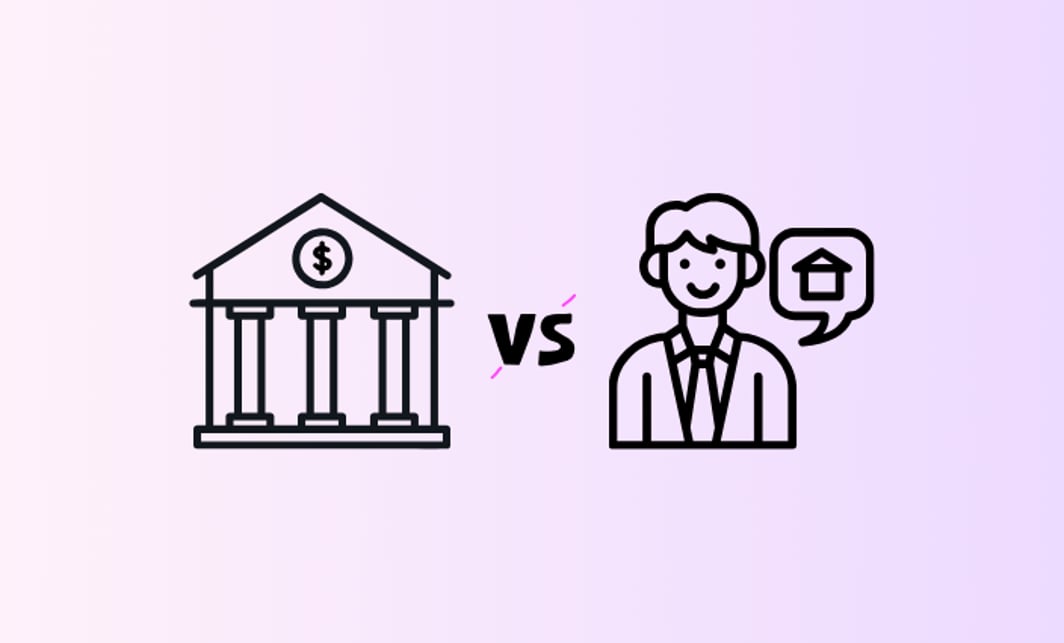Buying a home with someone else could help you break into Australia’s tough property market. With the right ownership structure, good financing, and strong legal protection, co-buying can help you get into a home years sooner—and set you up for long-term wealth.
Below is a clearer, more approachable guide to how it works and what to expect.
Why Australian property co-buying is surging in 2025
With median house prices exceeding $1 million in Sydney ($1.496M) and Melbourne, and the combined capital city median at $1,044,867, traditional solo homeownership feels out of reach for many Australians. Some buyers are adapting by pooling resources through strategic co-ownership arrangements.
The numbers don't lie:
- Combined household incomes can unlock 40-60% more borrowing power
- Dual deposits can reduce time-to-purchase from 8-10 years to 3-5 years
- Shared ownership can enable access to premium suburbs otherwise unaffordable alone
Benefits and drawbacks of co-ownership
Pros:
- Shared Financial Burden: Splitting the deposit, mortgage, and costs makes property ownership more affordable.
- Access to Property Market: Enables entry or investment that might otherwise be unattainable alone.
- Pooling Resources: Combines creditworthiness and income for improved mortgage terms.
Cons:
- Relationship Strain: Financial disputes or differing priorities can damage personal relationships.
- Complex Management: Coordinating decisions and responsibilities requires clear communication.
- Exit Challenges: Selling or transferring interests can become complicated. Clear agreements are essential.
Australian property co-ownership structures explained
Joint Tenants vs Tenants in Common: Which is right for you?
If you’re buying property with someone else in Australia, you’ll need to pick a co-ownership structure. This decision shapes how much each person owns, how you make decisions, and what happens if someone wants to sell or passes away. The two main options are joint tenants and tenants in common, and each suits different buyers based on their goals and relationship.
Joint tenants
Joint tenancy means all owners hold the property in equal shares. This structure can include two owners or a larger group. No matter how many people are involved, everyone has the same share and the same rights.
Joint tenancy also comes with the right of survivorship. If one owner dies, their share automatically passes to the remaining owners. The share doesn’t form part of the estate and can’t be directed through a will. Owners also can’t sell or transfer their share independently, so major decisions must be made together.
Tenants in common
Tenants in common allows flexible ownership percentages. Owners can agree to any split, such as 60/40 or 70/30, based on what works for them. Each person controls their share and can sell, transfer, or leave it to someone in their will. There is no automatic inheritance between owners.
Joint Tenants:
- Equal ownership shares
- Right of survivorship (automatic inheritance)
- Cannot sell individual shares
- Suitable for: Married couples, long-term partnerships
Tenants in Common:
- Flexible ownership percentages (60/40, 70/30, etc.)
- Individual shares can be sold or inherited via will
- Each owner controls their portion independently
- Suitable for: Friends, siblings, investment partnerships
Home loan options for joint property purchases
- Joint mortgage: The most common approach is for all co-owners to apply together for a home loan. Lenders assess each applicant’s income and financial situation, and both names appear on the mortgage and property title. All borrowers are equally responsible for repayments, and if one party cannot pay, the others must cover the shortfall. If one party defaults, the bank could pursue either or both parties for the outstanding balance.
- Property share loans: Some lenders offer ‘property share’ or split-loan arrangements, where each borrower takes a separate loan secured against their share of the property. This is often used for friends or family who want to keep finances distinct, but all owners must still guarantee each other’s loans.
Can I qualify for a joint mortgage if my partner has bad credit?
You can apply for a joint home loan if your partner has bad credit, but approval may be more difficult. Lenders consider both credit scores, so a lower score could mean a higher interest rate or a denied application. Both people are responsible for the loan, so the lender must feel confident about the risk.
Financial planning: Getting the numbers right
Upfront costs breakdown
Typical expenses to split:
- Property deposit (usually 20% of purchase price)
- Stamp duty (varies by state: 3-7% of property value)
- Building and pest inspections ($800-1,500)
- Legal fees ($1,500-3,000)
- Loan establishment costs ($600-1,200)
Ongoing cost management
Monthly expenses to consider:
- Mortgage repayments (principal and interest)
- Council rates and water charges
- Strata fees (for apartments/townhouses)
- Building and contents insurance
- Property maintenance and repairs
Consider setting up a joint expenses account with automatic transfers to help avoid payment conflicts.
Legal protection: co-ownership agreements
Buying a home with someone, whether a partner, friend or family member, can go smoothly when things are going well. Problems usually start later, when circumstances change or people disagree.
That’s where a co-ownership agreement is invaluable. It sets the rules upfront so everyone knows where they stand and what happens if things go off-track.
While Australian banks don't typically require these agreements before approving joint home loans, it is strongly recommended to take legal advice to minimise future disputes and legal complications.
A good agreement doesn't need to be complicated, but it should be thorough and legally enforceable. When properly drafted by a qualified solicitor, these agreements are generally valid and enforceable in Australian courts. Here are the key areas it must cover:
1. Financial contributions
Money is the biggest source of conflict in shared ownership, so this part needs to be crystal clear.
Your agreement should spell out:
- How much each person paid towards the deposit
- How the ongoing loan repayments will be split
- Who funds renovations or upgrades
- How unexpected costs—like urgent repairs, strata levies, or insurance increases—will be handled
This prevents arguments later if someone feels they're paying more than their share.
2. Usage rights
Co-owners need to agree on how the property will actually be used day-to-day.
This can include:
- Who gets to live in the property and under what conditions
- How rental income will be divided if one or all owners lease the property
- Rules for guests, access and general use
- How maintenance decisions are made
Clear boundaries mean fewer surprises and smoother living arrangements.
3. Exit mechanisms
At some point, one owner may want to sell or move on. Your agreement should outline exactly what happens next.
This includes:
- When a forced sale can be triggered
- How the property will be valued for a buyout
- Whether the remaining owner gets first option to purchase the other's share
- How disputes will be handled if you disagree on timing or pricing
These steps protect everyone and stop a breakup or disagreement from turning into a legal battle.
4. Life-changes provisions
Life rarely goes exactly to plan. A solid agreement takes that into account by covering scenarios such as:
- One person losing a job or having a major drop in income
- Relationship changes—breakups, new partners, or a divorce
- One owner needing to relocate for work
- What happens to each share if a co-owner passes away (estate planning)
Preparing for these situations avoids stress at the worst possible time.
Cost considerations
Most professionally drafted co-ownership agreements cost $2,000–$4,000, depending on complexity. To ensure your agreement is legally enforceable in court, it should be drafted or reviewed by a qualified property lawyer and properly executed.
While not cheap, this upfront investment is minimal compared to the legal and financial fallout that can occur if things go wrong.
Strategic exit planning: protecting your investment
Common exit scenarios
Voluntary Sale: Both parties agree to sell and split the proceeds according to their respective ownership percentages.
Forced Sale: The owner is compelled to sell due to financial hardship or life changes. Agreement should specify:
- Notice periods (typically 90-180 days)
- Marketing requirements
- Minimum price thresholds
- Commission and cost sharing
Buyout Arrangements: One owner purchases the other's share of the business. Key considerations:
- Independent property valuations (usually 2-3 required)
- Financing arrangements for the buying party
- Settlement timeframes
- Outstanding debt responsibilities
Real-world success stories
Risk management and insurance strategies
Essential insurance coverage
Mortgage Protection Insurance: Insurance that helps cover the mortgage repayments if a borrower cannot pay due to:
- Serious illness or injury
- Involuntary unemployment
- Total and permanent disability
Building and Contents Insurance: Insurance that covers damage to the property itself and also the personal belongings inside the property. Consider:
- Agreed value vs indemnity policies
- Natural disaster coverage requirements
- Personal liability protection
- Temporary accommodation costs
Life Insurance considerations: Term life insurance policies can provide a lump sum to fund buyout arrangements in the event of a co-owner's passing, thereby preventing a forced sale during a time of grief.
Common Pitfalls and How to Avoid Them
Getting started: next steps
Joint property ownership can accelerate your path to Australian homeownership when structured well. Success depends on selecting compatible co-owners, obtaining professional legal guidance, developing comprehensive financial plans, maintaining clear communication, and implementing realistic exit strategies.
- Choosing compatible co-owners with aligned goals and financial stability
- Professional legal guidance for bulletproof agreements
- Comprehensive financial planning for all scenarios
- Clear communication protocols for ongoing decision-making
- Realistic exit strategy planning from day one
The Australian property market rewards prepared buyers who think strategically about alternative ownership structures. Co-buying is not just a compromise; it is often the smartest route to building long-term wealth through real estate.
Frequently Asked Questions
Yes, but foreign buyer taxes and approval requirements may apply. Consult immigration lawyers for specific circumstances.
Disclaimer: This guide provides general information only. Seek professional financial, legal, and tax advice for your specific circumstances before making property investment decisions.




